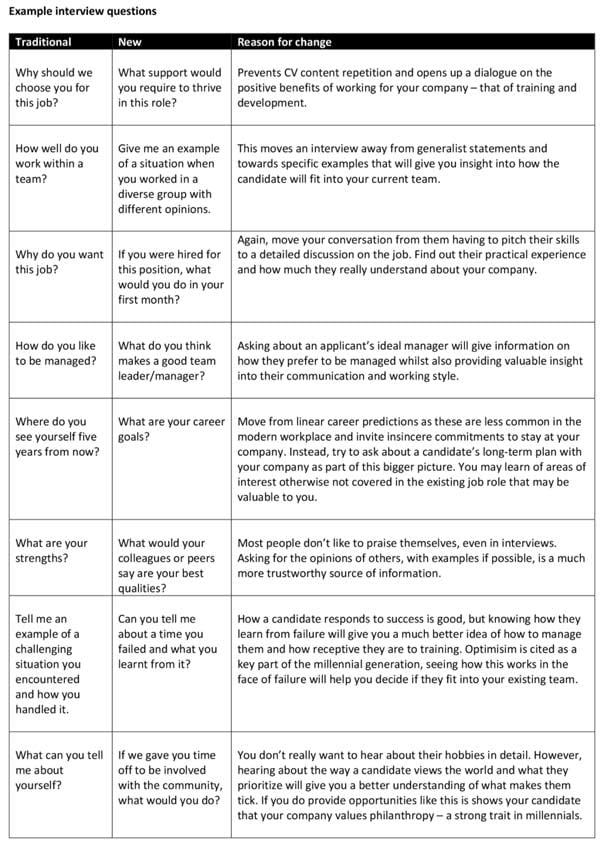Practical advice to attract talent.
Why do you need to evolve?
The construction industry is facing a catastrophic skills shortage. Existing on-site professionals are getting closer to retirement and a career in construction has an image problem with the younger generation. So, what can we do to successfully recruit millennials in the construction industry?
We have distilled the core issues that need to be addressed into seven points that cover interviewing and onboarding through to the fundamental change required to open the construction industry for all possible employees. So, here goes.
1. Interviewing and onboarding
The traditional interviewing process is slow, presumes the hiring company has all the power and often treats applicants as a nuisance rather than valuable talent.
Switch up your process! Instead of only accepting resumes when you have a position open, try keeping a file of the talented people interested in working for your company. Being open to people registering their interest in your company means that you will be less likely to miss out on the best talent. You can also contact your ideal candidates directly and avoid paying large onboarding fees to external recruiters.
Interviews can be very stressful and many of the hoops candidates are made to jump through are pointless to the actual role they are applying for. Try streamlining your questioning and make the process tasks much closer to the role. Everyone wants to tell you what you want to hear at an interview – so testing they can actually do the job would be better for both of you in the long run.
Be more flexible with your interview schedule. People are increasingly busy so companies need to be open to different interviewing methods. Can you have an initial interview via a video conference at a time that suits your candidate? You will save yourself a lot of time from your busy day by being able to shortlist via remote interviewing.

2. Worklife balance and flexibility
We don’t live in the same world we did in the 1950s. We don’t leave work life behind when we leave the office. We don’t have a job for life just because we turn up on time. Importantly, we don’t retire at 60. So, it stands to reason that newer generations of employees are looking for a place that will help them as they transition through the different stages of their life.
An open and flexible approach to the complicated demands of modern living is required to attract and retain top talent. This includes remote working and flexible working hours (where possible) but also equal parental leave, career breaks, and compassionate leave.
With a workforce that is likely to continue to work well into their 60s and beyond, have children and have a higher number of elderly relatives that require support than ever before, workplaces need to support employees if they are going to keep them.
Indeed, pinning the blame on millennials for ‘demanding’ flexible working and humanized employment is quite unfair as all advancements benefit all employees. Just because they have the leverage to ask for these rights doesn’t mean other generations don’t also want them.
Contrary to the widespread belief that millennials are not particularly loyal to an employer, many are just as loyal as previous generations when companies are flexible and are empathetic to their needs.
3. Work and play
You spend most of your waking life at work. The thought of this shouldn’t fill you with dread. Finding ways to create a happy, friendly atmosphere and show this to prospective employees will be a big thumbs up for your company.
Obviously, finding team members that complement one another is part of this atmosphere. Sharing the way in which your work community interacts, works and plays together is a great way to attract similar personalities. Ones that will fit in and be more likely to stay.
So, make sure you share the fun side of your company. Utilize social media (platforms your prospective employees use) to share snaps of your social outings, employee reward, and everyday workplace activities.
4. Eco-credentials and charity
Millennials care about the impact their actions, and their employers actions have on the planet. They are more informed, higher educated and have witnessed the debt and financial crisis endured by their parents.
“84 percent of millennials say that helping to make a positive difference in the world is more important than professional recognition.” -
Bentley University, Center for Women and Business
You will most likely already be using ecological alternatives in your everyday processes – highlight these in your recruitment drives. Show that you work with your local community and give back to causes that matter to the local area.
You may even want to consider offering schemes where employees can be paid to do charity work or do this as a larger group which will also create positive PR for your brand.
5. Equality
There is a strong stereotype of a UK construction worker which is a white male between the ages of 25-45. There is often also a presumption that those in the various trades that are most visible to the general public (plumbers, electricians, bricklayers) are not academic (polite for not intelligent). In an industry desperate for young blood, the existing stereotype ‘white working class male builder’ needs to be updated, and fast.
UK construction company RG Group recently reported that 99% of on-site construction workers are male. Whilst when including all on and off-site jobs, that figure only reduces to 89%. You can easily see why the construction industry is losing pace with other industries as they try to onboard more women into their ranks. This negative press isn’t just detrimental to the onboarding of women and minorities.
“A male dominated, macho work environment might be equally as unappealing to a Millennial man as a Millennial women. The Millennial generation hold the key to solving the talent drain in construction, which is why the balance of genders needs to be carefully considered.” -
RG Group, Women and the Construction Industry
A strong and publicly available equality charter that includes equal opportunities and a clear process for any complaints will go a long way in encouraging diverse applicants but only if they are on your website. You will need to address all of your literature, advertisements, and imaging to represent the diverse workforce you want to create. In short, you need to make people feel welcome, represented and valued – equally.
6. Mentorship and opportunities
A clear career path, training opportunities and examples of how other employees have been invested in need to become a part of your initial conversations with potential employees. If you are trying to sell your business as a great place to work – how you can develop them long-term is one of your biggest selling points.
One of the strongest benefits of working for your company may be the people you already employ. Do you already have trailblazers within your ranks? Could offering access to these people as mentors be a draw for upcoming talent? Creating in-house mentoring could be an ongoing and organic way to encourage the best workers to start their careers with you.
“Eight out of ten Millennials would like their manager to behave as a coach or mentor, investing in their professional development.” - Forbes, 2020
People change and grow. If you are nurturing your employees properly this may mean a change in career direction. But, this doesn’t mean you are putting your time and effort into someone who will leave. Although millennials have been reported to have a ‘strong pattern of short-term employment’, they are just as loyal to companies that invest in them as other generations. The key difference is that they are more likely to leave if they are unhappy, so don’t make them unhappy.
7. Technology and innovation
Your brand
Why should the best talent work for you? Aside from the remuneration package you offer, what are your existing staff saying about you?
Take the opportunity to use your active social feed and website to showcase your employees. A happy employee can demonstrate the value of working for your company much better than any advertising campaign ever could. Every member of your staff should be an ambassador for your brand. If they are not up to the task then you need to find out why you are not exceeding their expectations as an employer.
The job
All of the tools your employees use and interact with will reflect how up-to-date you are with the latest technological developments. From your coffee making facilities to your largest piece of equipment on site – all of it shows if you are investing in your business.
As a generation brought up on interactive technology, using technology onsite is one area that will attract younger workers. On-site tech and machinery are predicted to be the new career path for many construction professionals. It also opens up more construction roles for women and differently abled people currently put off by current stereotypes, safety concerns, and the low skilled manual labor job stigma.
“Too many firms use outdated software or rely on paper – an alarm bell for those in their 20s and 30s. To millennials, outdated technology makes companies look old-fashioned.” - CMIC, 2017
Obviously, keeping on top of fast technological developments isn’t easy (or cheap). So, concentrate on what will have the most impact on your business and your employees’ efficiency.
If you can’t afford new hardware ensure that you have the updated software that your staff needs. This includes the most efficient internal systems such as your CRM and ERP. Your older model computers may process slightly slower than newer models, but if the software gives you the answers you need you will still be saving time.
Giving your team the ability to use your company systems using mobile devices will empower them to excel. By enabling your teams with the systems they need on their phones or tablets you are increasing their efficiency, keeping them up-to-date on-site whilst saving the rainforest by not having to print out the various instructions manuals they might need to repair or operate tech on-site.
Machines
Robotics, AI, and drones are all tipped to be making their mark on the construction sites of the future. The impact of this worksite revolution will be two-fold. Obviously, the rise in technology on-site will reduce the pain of the skills gap as fewer people are required thanks to highly skilled machinery. Whilst the increase in technology on-site will be filling job roles (roles that are already harder and harder to fill), the impact on employment promises to be positive. The next generation of construction professionals will become highly technological. These professionals will be the engineers and operators of the high-end technology being used on-site. The switch from manual labor to computerized expertize will encourage technological millennials to consider careers in the construction industry.
The long road ahead.
All of the changes listed above may seem like a lot of work for the average construction company but it is long overdue. Without an overhaul of working processes the next generation of construction industry professionals will quit within two years – if they even start.
Furthermore, failure to embrace the latest technology will leave the whole industry slow to respond to the challenges from larger international businesses. Whether you like it or not, the machines are coming, and if you don’t like the idea of millennials driving them you are in the wrong game.



